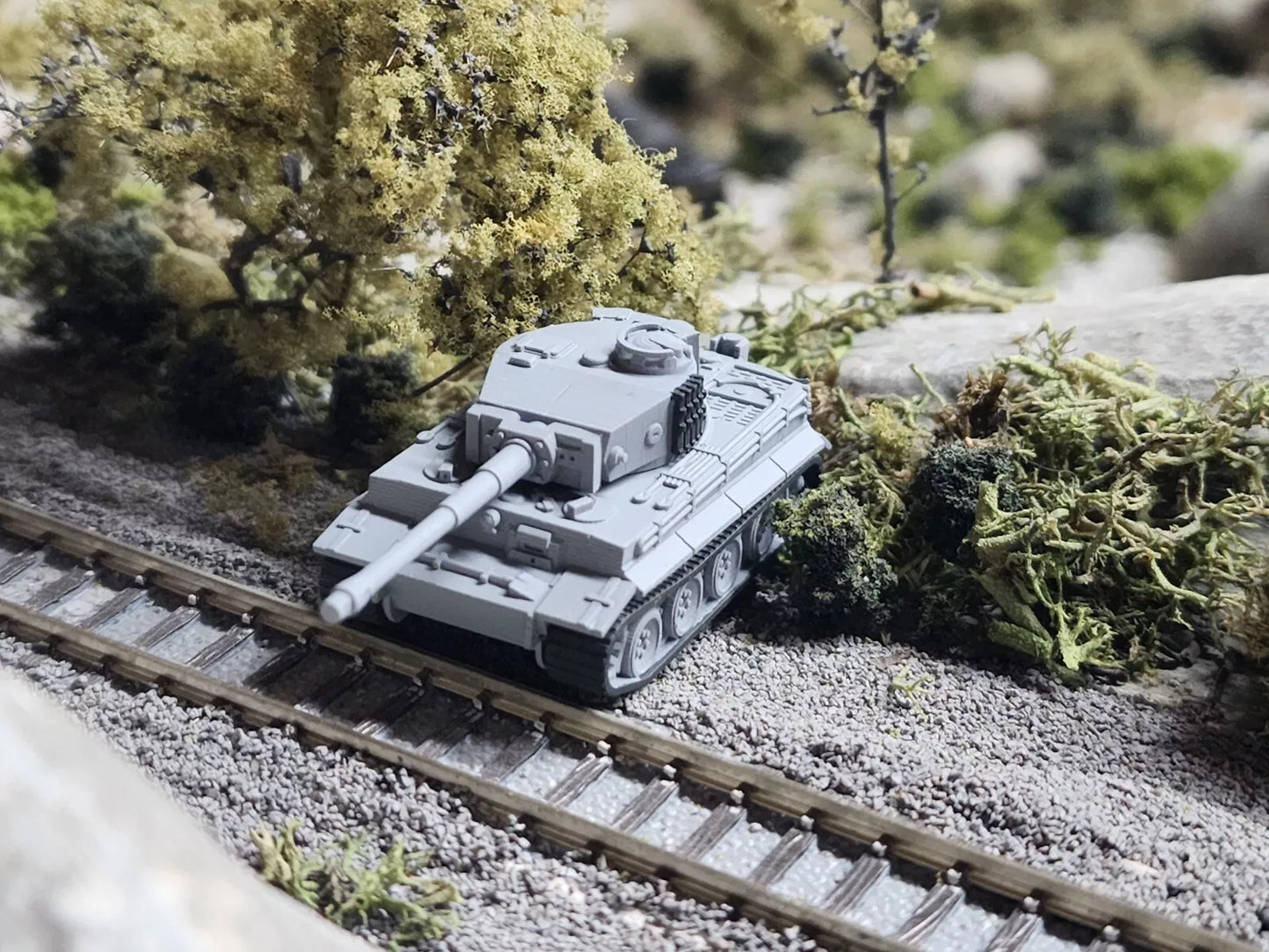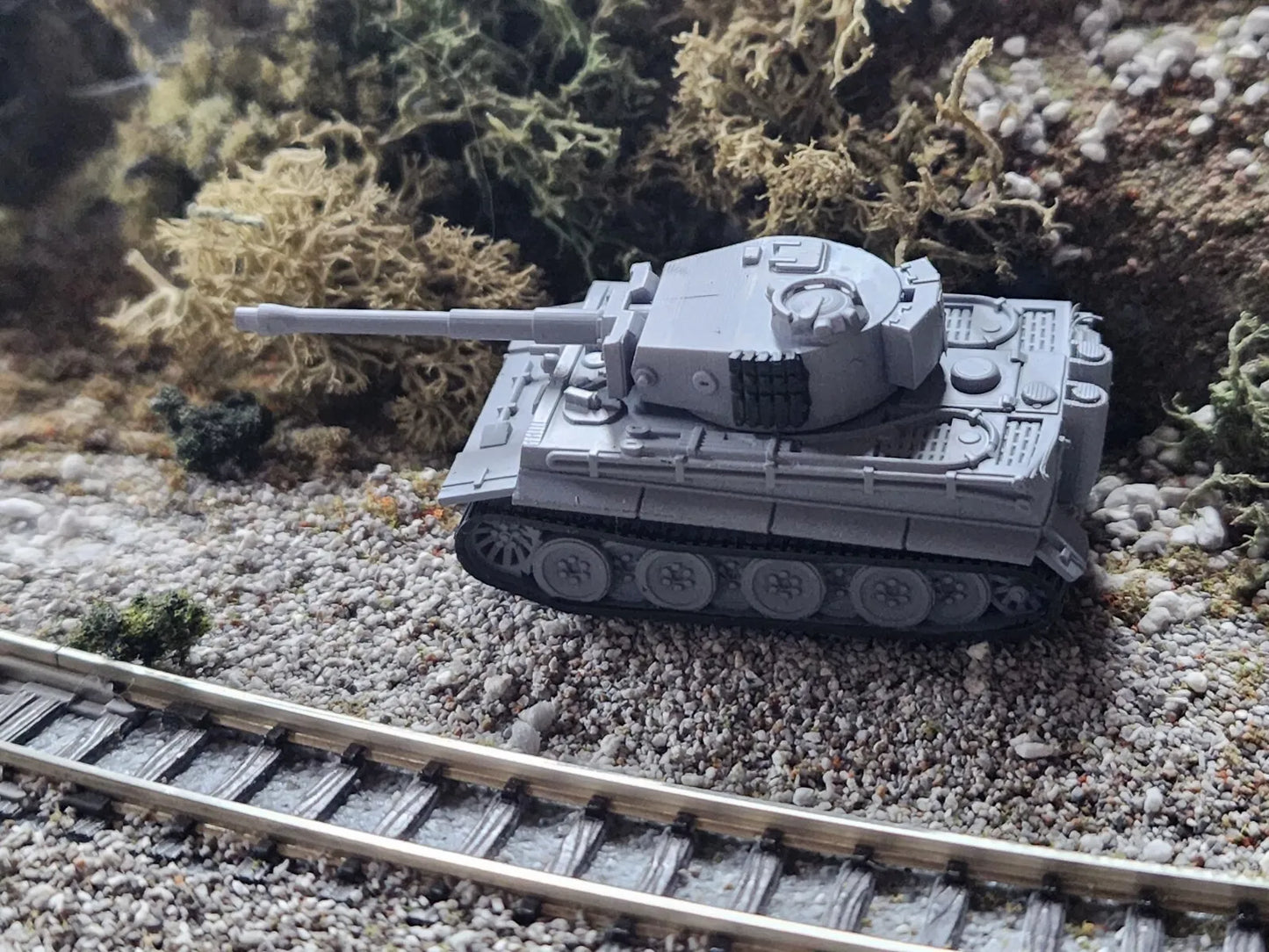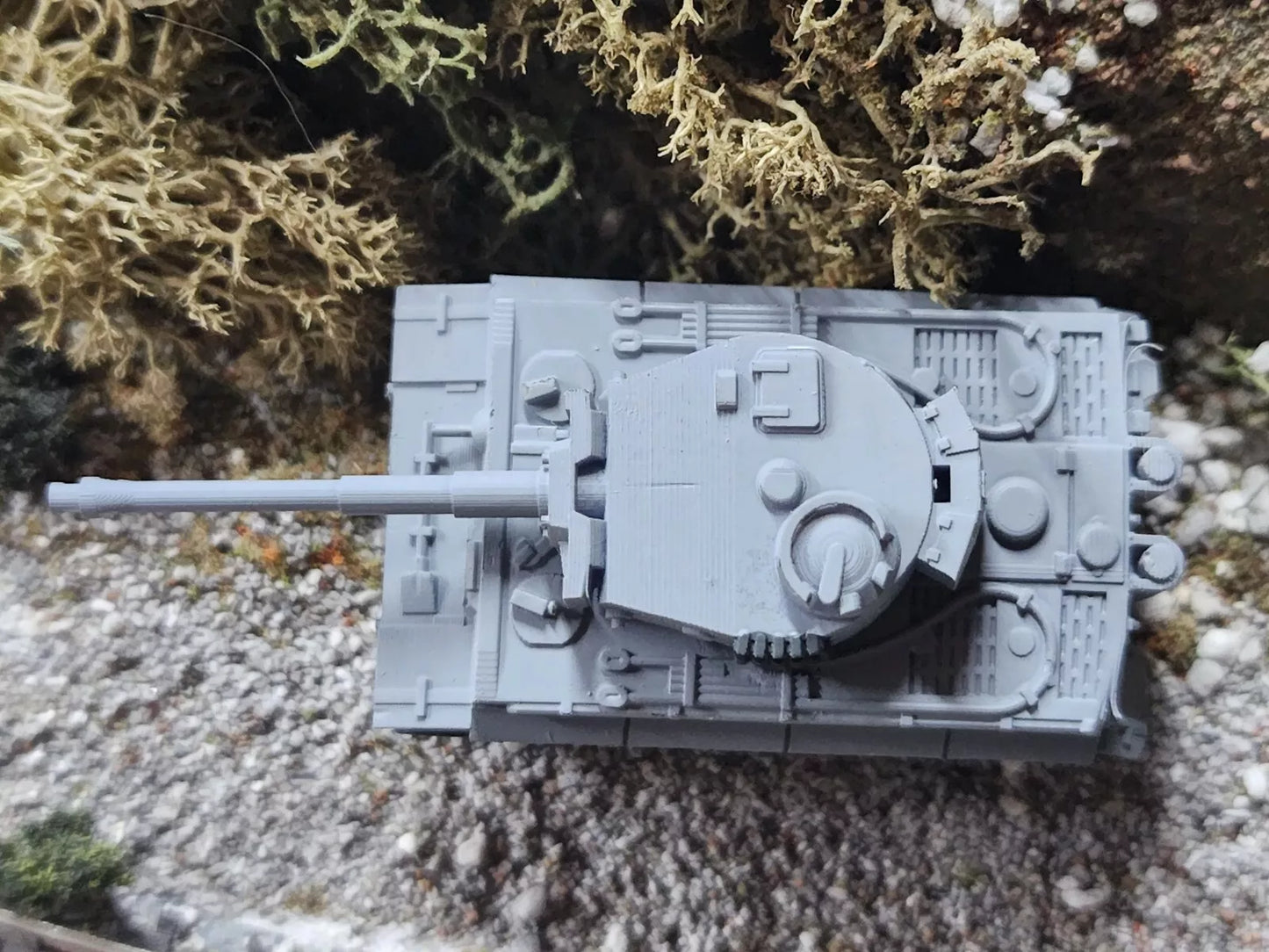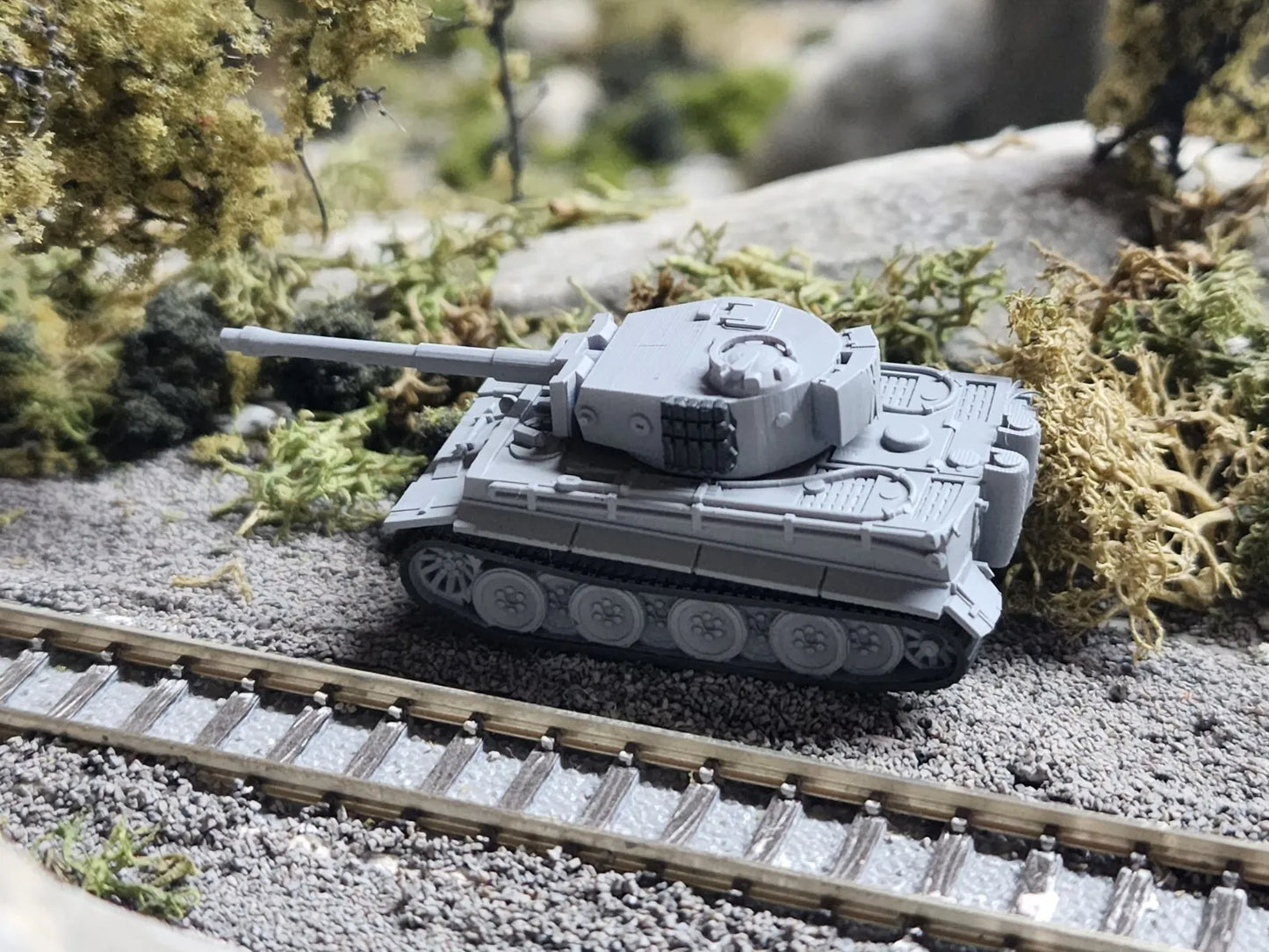Recon341
N Scale 1:160 Tiger 1 German Heavy Tank WWII Armor
N Scale 1:160 Tiger 1 German Heavy Tank WWII Armor
Couldn't load pickup availability
N Scale 1:160 Tiger 1 German Heavy Tank WWII Armor
Turret is able to rotate 360 degrees. All other components are static.
Service History: 1942 - 1945
Dimensions
Length: 2.15in
Width: .925in
Height: .7in
Weight: .4oz
The Tiger I was a German heavy tank of World War II that began operational duty in 1942 in Africa and in the Soviet Union, usually in independent heavy tank battalions. It gave the German Army its first armored fighting vehicle that mounted the 8.8 cm (3.5 in) KwK 36 gun (derived from the 8.8 cm Flak 36, the famous "eighty-eight" feared by Allied troops). 1,347 were built between August 1942 and August 1944.[12] After August 1944, production of the Tiger I was phased out in favor of the Tiger II.
While the Tiger I has been called an outstanding design for its time, it has also been called overengineered, using expensive materials and labor-intensive production methods. In the early period, the Tiger was prone to certain types of track failures and breakdowns. It was expensive to maintain, but generally mechanically reliable. It was difficult to transport and vulnerable to immobilization when mud, ice, and snow froze between its overlapping and interleaved Schachtellaufwerk-pattern road wheels, often jamming them solid.
The tank was given its nickname "Tiger" by the ministry for armament and ammunition by 7 August 1941, and the Roman numeral was added after the Tiger II entered production. It was classified with ordnance inventory designation Sd.Kfz. 182. The tank was later re-designated as Panzerkampfwagen VI Ausführung E (abbreviated as Pz.Kpfw. VI Ausf. E) in March 1943, with ordnance inventory designation Sd.Kfz. 181.
Today, only nine Tiger I tanks survive in museums and private collections worldwide. As of 2021, Tiger 131 (captured during the North African campaign) at the UK's Tank Museum is the only example restored to running order.
Share









